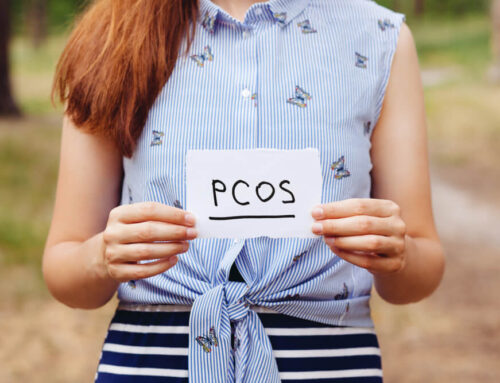As women approach menopause, the importance of bone health becomes increasingly apparent. Two common conditions, osteoporosis and osteoarthritis, often coexist and may be confused due to their similar-sounding names. In today’s blogpost, we will ask and answer the question of what is the difference between osteoporosis and osteoarthritis, shedding light on what every woman needs to know for optimal bone health.
If you are looking for an obstetrics specialist in Miami, Florida, it is important to do proper research and select a specialist who will be able to cater to your needs and help you with anything you might need, continuously. One of the best medical centers for the diagnosis in question is called OB/GYN Associates of Miami, so make sure to put them on the list of centers to check out.
Understanding Osteoporosis
Understanding osteoporosis is essential for women, particularly as they approach menopause, when the risk of this bone-related condition significantly increases. Osteoporosis is characterized by a gradual loss of bone density and quality, making bones more susceptible to fractures. The intricacies lie in the ongoing process of bone remodeling, where old bone is replaced by new tissue. During menopause, the decline in estrogen, a hormone crucial for maintaining bone strength, contributes to an imbalance, leading to accelerated bone loss.
The condition is often referred to in conjunction with osteoarthritis, emphasizing the importance of distinguishing between the two. Osteoporosis is a silent progression, with symptoms such as back pain, height loss, and a stooped posture manifesting late in the disease. Regular bone density tests, understanding risk factors, and adopting lifestyle strategies like weight-bearing exercises and adequate nutrient intake are pivotal in managing and preventing osteoporosis, ensuring women can maintain optimal bone health as they age.
Understanding Osteoarthritis
When it comes to the topic of osteoporosis vs osteoarthritis, understanding osteoarthritis is key to addressing the challenges posed by this degenerative joint disease, especially among women approaching menopause. Osteoarthritis primarily affects the cartilage, the protective tissue covering the ends of bones in joints. As the cartilage breaks down over time, joints experience stiffness, pain, and swelling. This condition commonly targets weight-bearing joints like the knees and hips. It is crucial to differentiate between osteoarthritis and osteoporosis, as the former focuses on joint health, not bone density. Diagnosis involves a combination of physical examination, imaging studies like X-rays, and an evaluation of symptoms. Lifestyle adjustments, physical therapy, and pain management strategies form the core of osteoarthritis treatment. Recognizing the distinct characteristics of osteoarthritis is fundamental for tailored interventions, helping individuals maintain joint function and quality of life as they age.
Bone Density and Risk Factors
Bone density and associated risk factors play a pivotal role in the understanding and management of conditions like osteoporosis, particularly in women approaching menopause. Bone density refers to the strength and thickness of bones, crucial for maintaining skeletal integrity. As individuals age, bone density naturally diminishes, but certain factors can accelerate this process, increasing the risk of fractures.
Key risk factors include:
- advancing age
- family history of osteoporosis
- hormonal changes
- inadequate calcium intake
- inadequate vitamin D intake
- smoking
- excessive alcohol consumption.
Women in the pre-menopausal and menopausal stages are particularly vulnerable due to hormonal fluctuations, notably the decline in estrogen levels. Regular bone density tests, like dual-energy X-ray absorptiometry (DEXA), are essential for early detection and monitoring changes in bone health. Recognizing and addressing these risk factors is paramount for developing personalized preventive strategies and interventions to safeguard bone density and overall skeletal well-being.
Symptoms and Signs
Distinguishing between osteoarthritis vs osteoporosis and answering the question of what is the difference between osteoporosis and osteoarthritis lies on recognizing their unique symptoms. Understanding these manifestations is essential for early diagnosis and effective management.
Symptoms and Signs of Osteoporosis:
- Back Pain: Fractures related to osteoporosis, particularly in the spine, can cause chronic back pain.
- Loss of Height: Spinal compression fractures may lead to a gradual loss of height over time.
- Fractures: Bones become more fragile, increasing the risk of fractures, especially in the hip, spine, and wrist.
- Stooped Posture: Vertebral fractures can contribute to a stooped or hunched posture.
Symptoms and Signs of Osteoarthritis:
- Joint Stiffness: Osteoarthritis commonly presents with stiffness in affected joints, particularly after periods of inactivity.
- Joint Pain: Persistent pain in the affected joints, often exacerbated by movement or weight-bearing activities.
- Swelling: Inflammation of the joint lining can lead to noticeable swelling.
- Cracking or Grating Sensation: As cartilage breaks down, joints may produce a cracking or grating sound during movement.
Recognizing these symptoms is vital for early intervention and tailored treatment approaches for individuals experiencing either osteoporosis or osteoarthritis. Regular health check-ups and open communication with healthcare providers are essential for addressing concerns and maintaining optimal bone and joint health.
Diagnosis and Imaging
Diagnosing osteoporosis and osteoarthritis involves a combination of clinical evaluation and imaging techniques to accurately assess bone health and joint integrity. For osteoporosis, bone density tests, such as dual-energy X-ray absorptiometry (DEXA), play a pivotal role in measuring bone mineral density and identifying the risk of fractures. These tests help clinicians diagnose osteoporosis early and monitor changes in bone density over time.
In contrast, osteoarthritis diagnosis relies on a comprehensive approach, including physical examination, assessment of medical history, and imaging studies like X-rays. X-rays reveal joint space narrowing, bone spurs, and other characteristic changes associated with osteoarthritis. Integrating these diagnostic tools allows healthcare professionals to differentiate between these conditions accurately and formulate targeted treatment plans based on the specific needs of each patient. Regular monitoring through these diagnostic methods is essential for proactive and effective management of osteoporosis and osteoarthritis.
Treatment Approaches
Management of osteoarthritis vs osteoporosis varies due to their distinct nature. Osteoporosis treatment involves medications to strengthen bones, calcium and vitamin D supplementation, and lifestyle modifications. Osteoarthritis management focuses on pain relief, physical therapy, and, in severe cases, joint replacement surgery.
Lifestyle and Prevention
Prevention is key for both conditions. Weight-bearing exercises, a diet rich in calcium and vitamin D, and lifestyle adjustments can reduce the risk of osteoporosis. Osteoarthritis prevention involves maintaining a healthy weight, exercising regularly, and avoiding joint injuries. It is essential to grasp the difference between osteoarthritis and osteoporosis prevention strategies.
Call Our Center!
In conclusion, understanding the difference between osteoporosis and osteoarthritis is crucial for women approaching menopause. While both conditions may coexist, recognizing their unique characteristics allows for accurate diagnosis and targeted treatment.
As mentioned, regular check-ups, a healthy lifestyle, and awareness of risk factors are paramount for optimal bone health. By navigating the nuances of osteoporosis vs osteoarthritis, women can empower themselves with the knowledge needed for a proactive approach to bone care.
Finding the right medical expert to deal with your condition, regardless if you are suffering from either of the two conditions, is key to a successful treatment path. Call our center, and schedule a consultation. We are here for you, so pick up the phone! Take care of your health on time.




